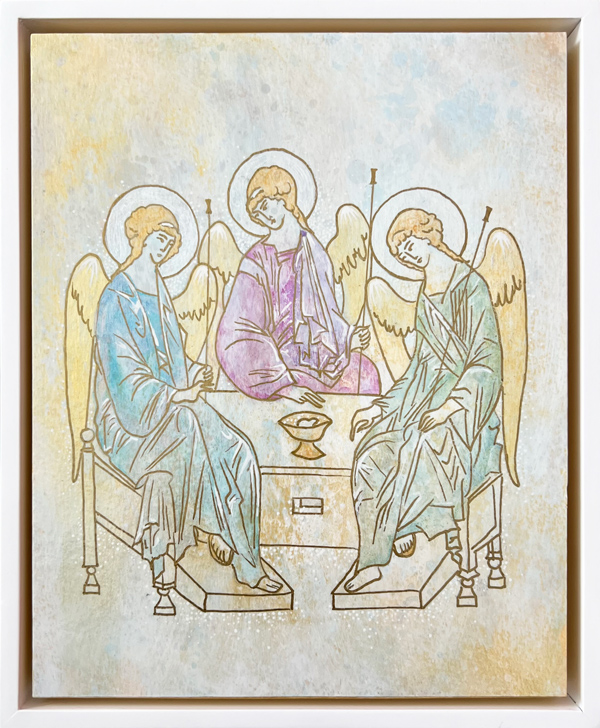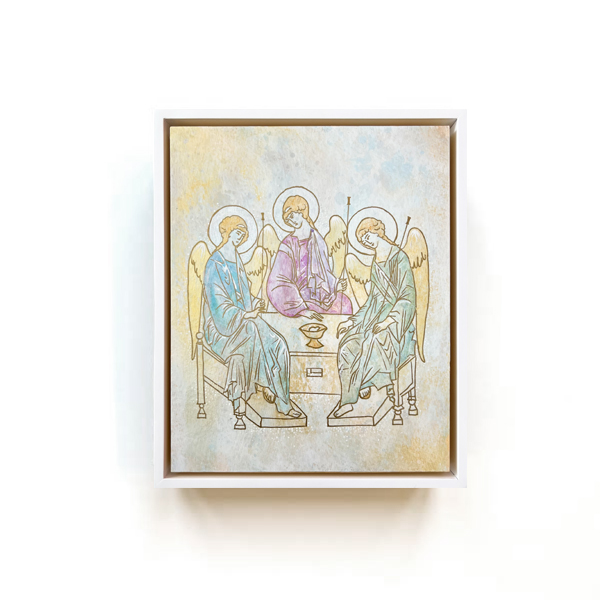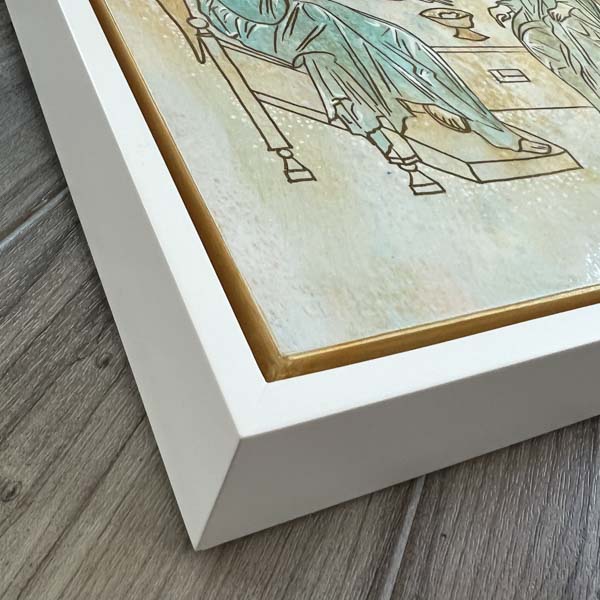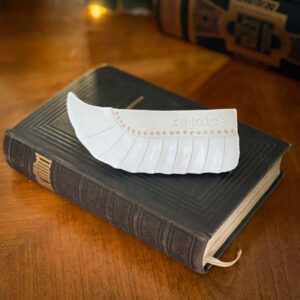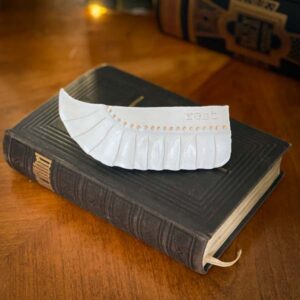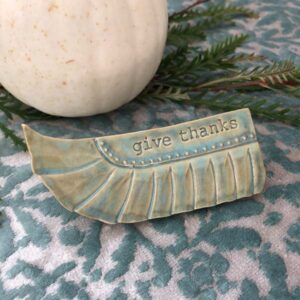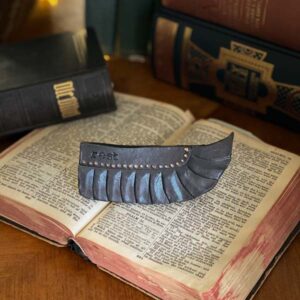The Eternal One – mixed media painting
$225.00
This original 8 x 10 inch mounted and framed mixed media painting features the Holy Trinity after Andrei Rublev’s Hospitality of Abraham in soft luminescent pastel tones and metallic gold with white dot work. The background of this piece is a rich multi-layer exploration of color and texture on heavyweight paper. The imagery from one of Christianity’s most beloved images, is a vibrant combination of linework and stippling.
This icon image is an illustration from the story of God’s appearance to Abraham in the form of three men found in Genesis 18. It’s true title is The Hospitality of Abraham. Rublev uses this image of God appearing as three persons to illustrate the Triune God. The mysterious way in which these three figures are communing and interacting with each other and the similarities/differences in the figures portrays the Trinity concept of “one God in three persons”. Here is a circle of love. You can read it in their faces. Humility and grace are present also along with a profound peace.
This mounted and framed work of art arrives ready to hang with certificate of authenticity and artist statement. Dated and signed by the artist on back of piece.
1 in stock
ARTIST STATEMENT
It is out of Russia’s heritage of faith that perhaps the world’s most well-known work of Christian art comes to us. Andrei Rublev was a Russian monk who devoted his life to the painting of icons and frescoes in and around Moscow, Russia. He painted this image in memory of Saint Sergius, the founder of Russia’s Monastery of the Holy Trinity.
Saint Sergius had a wonderful vision that all Russia should be united around the Name of God. In this unity of faith and love, the Russian people would conquer “the devouring hatred of the world by the contemplation of the Holy Trinity.”
All three figures hold staffs in their left hands indicative of their authority and power. On the table sits a single bowl of food, also indicative of their oneness.
The Father, seated left, is dressed in a luminous, iridescent cloak as the Father cannot be seen and yet is visible in all creation. It would also seem a visual representation of Psalm 104:2 - “You robe yourself in light as in a garment.” With his right hand he gestures the sign of blessing toward the figure of Christ.
At center, sits Christ the Son. His garment is brown, to represent his human, earthly nature, with a blue cloak to represent his heavenly, divine nature. A band of gold across his shoulder, symbolizing government authority, signifies Christ’s kingship. His right hand gestures towards the chalice indicating his divine mission to become the sacrificial lamb who will take away the sins of the world. His gesture of two fingers again is a reference to his dual nature — fully man and fully God.
The Holy Spirit is seated at right wearing both blue and green, the colors of heaven and earth. It is the Spirit who moves through all — heaven, earth, water, sky. The green cloak is also representative of the new life and renewal in the Spirit as experienced by believers. The figure’s hand gestures downward, perhaps to the small opening at the front of the altar representative of the customary placement of relics and remains of saints by certain traditions.
“We must give all our attention to that open space [at the front of the table] because it is the place to which the Spirit points and where we become included in the divine circle... I come to the realization that this rectangular space speaks about the narrow road leading to the house of God. It is the road of suffering. While it’s four corners remind us that it represents the created order, including all people from north, south, east and west, its position in the altar signifies that there is room around the divine table only for those who are willing to become participants in the divine sacrifice by offering their lives as a witness to the love of God.” — Henri Nouwen
The clean lines and stylized forms found in Byzantine and Orthodox Christian art inform my work. I combine these with a technique found in Celtic Christian illumination: to outline/fill the space between forms with tiny red dots — a visual indicator of the life-giving Word. I use a dot pattern to likewise add a sense of life and divine energy to my work.

Additional information
| Weight | 1 oz |
|---|---|
| Dimensions | 8 × 10 in |
